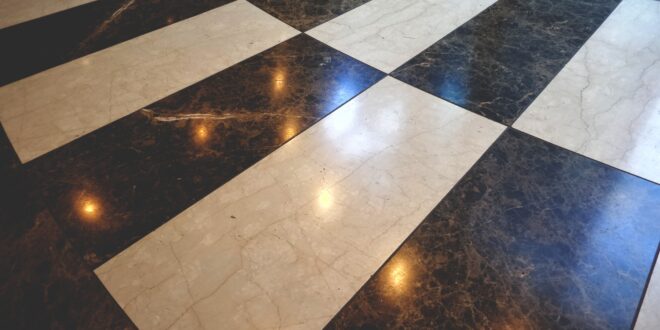If you’re looking for a good flooring option for your commercial or industrial operation, one of the best overall options is an epoxy-coated-concrete floor. An epoxy floor is a standard choice for a wide range of businesses. Resinous epoxy binds directly to the concrete as it dries, bringing numerous benefits. Epoxy is extremely hard and resistant to damage, as well as being resistant to many chemical spills. Epoxy flooring is easy to clean and keep hygienic, while potentially lasting for decades with minimal maintenance.
However, this is all contingent on one factor: proper installation. An epoxy floor is really only as good as its installers, and there are several ways inexperienced companies can create problems. Be sure your epoxy flooring contractor knows how to do epoxy right!
The Four Most Common Epoxy Floor Installation Errors
1 – Improper humidity and temperature
Epoxy is extremely sensitive to moisture, as well as low temperatures. For best results, the room being floored needs to be as dry as possible. The use of de-humidifiers is a very good idea, especially if there’s rain expected. Even high humidity levels can prevent the epoxy from drying or cause it to be weak once dried.
The same is true of temperatures. Epoxy will not harden correctly at temperatures below about 50F, so it’s important to maintain proper temperature control as well.
2 – Incorrect floor preparation
The concrete floor beneath the epoxy must also be properly prepared, for the epoxy to bind properly. It should be thoroughly cleaned, as even small amounts of dirt and dust can disrupt adhesion. However, it also must be completely dried after cleaning, as any moisture in the concrete could ruin the epoxy layer. Oils on the surface can also cause problems.
Epoxy can also be added onto other surfaces, but they must be naturally porous and pitted, like concrete is. Epoxy will never bind properly to smooth surfaces.
3 – Spreading the epoxy too thin
Exact measurements will vary depending on the type of epoxy and the mix/blend being used, but using too little epoxy will create a floor which is either too thin, or even contains exposed concrete. Resist the urge to try to go cheap here, or ‘stretch out’ a small amount of epoxy. Your contractor should always be using the proper recommended amounts of epoxy, even if it means mixing a bit more than is necessary.
Typically, you want to have a bit of leeway. For example, if you’re covering 500 square feet of flooring, it’s best to have enough epoxy for 600 square feet. This ensures there’s plenty to go around, and leaves room for error without ruining the project.
4 – Mistakes in mixing
Finally, epoxy can go wrong before it even touches your floor. One very common mistake is for the contractor to get in a hurry and mix the epoxy blend too quickly. This is typically done using paddles, much like a kitchen mixer – and as with a mixer, if you go too quickly, you end up with a lot of air trapped in the blend. This will cause the epoxy to be weak or have unsightly bubbles visible in the final hardened surface.
In short, your epoxy floor contractors should be highly experienced. Ask them questions about how they prepare and install the epoxy, to ensure they know what they’re doing!
 HammBurg Be informed with latest news, reviews, entertainment, lifestyle tips, and much more.
HammBurg Be informed with latest news, reviews, entertainment, lifestyle tips, and much more.




